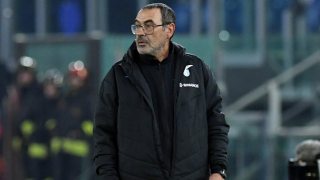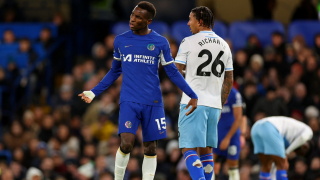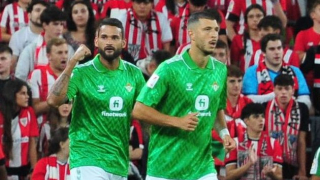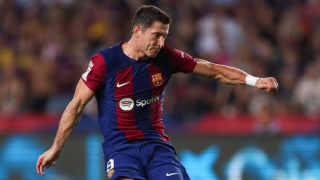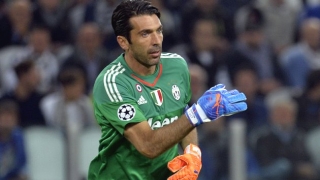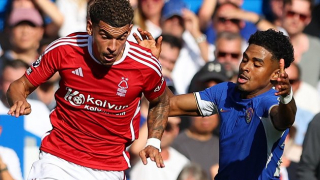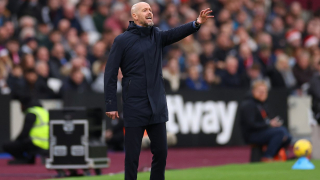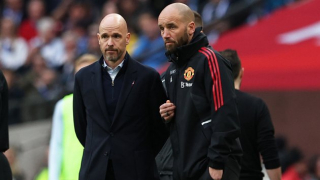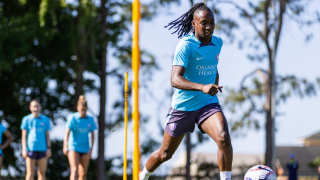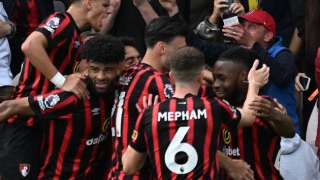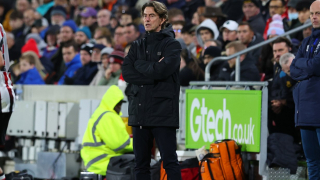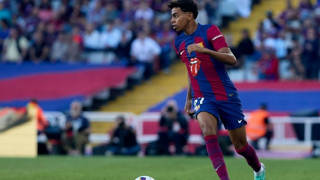Chelsea made one of the most exciting hires of the summer when they appointed Maurizio Sarri as their new head coach.
Sarri, who succeeds fellow Italian Antonio Conte at Stamford Bridge, rose to fame while threatening Juventus' monopolisation of Serie A during three seasons with Napoli.
Ultimately, however, Sarri is about more than results. He made this clear in his first press conference as Chelsea boss when, asked to describe his coaching philosophy, he referenced the need to have fun. "Ours is not a sport but a game," he said. "And anybody who plays a game started…when they were a child to have fun. So the child in each of us must be nurtured."
While he has only had four seasons of top-flight management, Sarri has impressed in every single one not only for his keeping Empoli up and taking Napoli close to the summit of Italian football, but for the style he has implemented along the way. His teams play exciting, intense, organised, attack-minded football; it is, for most purists, extremely fun to watch.
In order to get a better idea of what Chelsea fans can look forward to next season, let us first take a look at the statistics accrued throughout his time at Napoli.
SARRI'S NAPOLI: A STATISTICAL OVERVIEW
- Topped Serie A xG (Expected Goals) charts in 2015/16 and 2017/18. Finished second in terms of xG in 2016/17.
- Top scorers in 2016/17. Finished inside Serie A top three for goals scored in all three seasons.
- Had Serie A's most shots per game in 2015/16 and 2017/18. Had second most in 2016/17.
- Averaged more possession and a higher pass success percentage than any other Serie A team in all three seasons.
- Topped charts for DC (passes completed within an estimated 20 yards of goal, excluding crosses) last season. Finished inside top three for DC in all three seasons.
As shown in the statistics above, Napoli were the most dominant possession side in Serie A during Sarri's time in charge. They were also the most accurate passing side, and often enjoyed possession near to the opponent's goal. This helped them to create more chances and have more shots than any other Serie A side in two of Sarri's three seasons at the helm, which in turn meant they always featured near the top of the league's goals scored column.
Based on these statistics, Chelsea can expect Sarri to bring about the following:
- Increased possession.
- More precise passing.
- More consistent creation of scoring chances.
- More goals scored.
Statistics per WhoScored.com and Understat.com.
SARRIBALL AT CHELSEA: THE BASICS
Since Sarri came in, Chelsea have made just one signing: Jorginho. That one signing, however, is integral to how they will play – Jorginho was, after all, a fundamental piece of Sarri's Napoli puzzle. As yet there are no major outgoings, with Eden Hazard, Thibaut Courtois and N'Golo Kante remaining Chelsea players at the time of writing.
There have not been many changes in personnel, and there is no necessity for lots of activity; Sarri has never prioritised the transfer market and has openly stated that he doesn't like to discuss who will be signed and sold, preferring to focus on developing the players already available to him. However, there will be a total change in tactics.
Sarri will move away from the 3-4-2-1 Conte preferred, implementing the 4-3-3 he utilised – a brief and generally underwhelming experiment with 4-3-1-2 aside – for most of his time at Napoli. He will also bring in a higher and more active pressing game and a faster, more penetrative possession approach. Below is how he lined his players up for the friendly win over Perth Glory.
CHELSEA'S ATTACKING TACTICS UNDER SARRI
While Sarri has been in charge for less than two weeks and has only overseen one match as Chelsea head coach, there has already been a marked change in the way the team plays. The friendly with Perth Glory showcased some important tactical aspects that we can expect to see more of throughout the 2018/19 season and beyond.
In the attacking phase, Chelsea's 4-3-3 became more of a 2-3-2-3, with a clear build-up structure in place already. The centre-backs formed a triangle shape with the defensive midfielder, the full-backs remained close rather than advancing high down their flanks, and the outer central midfielders pushed on beyond the opposition midfield line.
Many top possession-based sides split their centre-backs wide when building up, with a midfielder dropping deep between them to form a three when appropriate. This then allows their full-backs to push high down the flanks. Sarri does not use this approach, however. Rather, he has his centre-backs stay close to one another when building up, forming a compact triangle shape with the defensive midfielder.
This compact triangular shape is helpful in several ways.
- Compactness ensures good central coverage in case of a turnover, helping to mitigate any opposition counter-attack should possession be ceded.
- Each player within triangle has two immediate passing options, helping them to retain and establish possession.
- Short distances between players within triangle allow for quick passes and combinations, giving opponents less time to react and making it harder for them to intercept.
- Triangle allows for diagonal passes into the defensive midfielder (Jorginho), which makes it easier for him to receive and progress possession instantly than if he were to receive straight vertical passes to feet with his back to goal.
The graphic below shows an example of how Chelsea used their triangular build-up structure of two centre-backs and the defensive midfielder to bypass pressure and create a 'free man'. David Luiz passes to Ethan Ampadu, who attracts the attention of the opposing striker. Ampadu then passes into Jorginho, who attracts the nearby opposing central midfielder. Jorginho then passes to Luiz, who has become free and can therefore drive forward, unopposed, with the ball at feet.
Another noticeable structural aspect of Chelsea's new attacking approach seen in the above graphic is the deep positioning of both full-backs when establishing possession. Sarri likes this as it not only gives the centre-backs another passing option should the centre become too congested, but it offers extra security against the counter-attack should possession be given away.
The outer central midfielders in Sarri's 4-3-3 system both looked to push on and take up positions behind the opposition midfield line, as seen below. Here, Cesc Fabregas and Ross Barkley move up to get between the lines, offering a penetrative passing option. This helps Chelsea to play forward, which was a big part of Sarri's Napoli attack.
Sarri doesn't want his side to simply possess the ball – he wants them to use their possession. This involves playing with a great deal of verticality – rather than passing horizontally from wing to wing, he wants his players to pass forward and eliminate opposing defenders in the process. Put simply, he wants them to take the quickest route to goal.
Even if the forward passes don't lead to a scoring chance, they force the opposition either to drop deep defensively and/or contract and congest the centre, reducing the threat of opposition counter-attacks from high up the pitch and/or leaving space out wide for Chelsea's full-backs and wingers to occupy.
Below is an example of the verticality in possession Sarri wants. Here, Luiz has a number of simple sideways or short passing options. However, he instead opts for a riskier curled pass to Fabregas, eliminating the opposition's first two lines of defence in the process. This pass and its benefits would not have been possible had Fabregas not pushed beyond the opposition midfield line in the first place, which reinforces the advantages of the outer central midfielders' aforementioned movements and positioning in build-up.
Alvaro Morata started as Chelsea's striker against Perth Glory, regularly peeling off the frontline to offer another penetrative passing option to his central defensive teammates. In doing so, he took his marker with him, creating space behind to be exploited. An example of this is seen below – Morata moves deep and receives a forward pass from Ampadu before laying off to Fabregas, who again has moved up into space behind the opposition midfield line.
This particular move was used frequently by Sarri's Napoli as a way of quickly progressing possession. A vertical forward pass is played to the striker, who drops deep to receive. With his back to goal and under pressure from an opponent, the striker has little time to control the ball and doesn't have a good view of the pitch. So, rather than risk being tackled or bullied off the ball, the striker plays a first-time pass to one of the outer central midfielders, who – unlike the striker – is free, facing the goal, and can thus move forward with the ball more easily.
CHELSEA'S DEFENSIVE TACTICS UNDER SARRI
While a lot of interesting attacking ideas were on show in Chelsea's win over Perth Glory, their defence was given less of a workout. Dominating possession, Sarri's side spent the majority of the game attacking, and so it is difficult to predict how they will defend based on this match alone.
In defensive transition there were some instances of intensive counter-pressing, while in organised defence the shape appeared to be the same 4-5-1 seen with Sarri's Napoli. Within this shape, the team pressed high up the pitch, supported by a high defensive line. The high line helped to maintain compactness while the more advanced players pressed high, and the pressing seemed ball-oriented in nature – one player would press the ball, while the others would look to cut off the surrounding passing lanes/options.
An example of Chelsea's high press can be seen above. Here, Pedro moves up to press the ball-player, while Morata cuts off the ball-player's passing lane to the centre-back and Jorginho positions himself to press the opposing central midfielder should he receive possession. Fabregas moves to discourage the pass wide to the left touchline, while Barkley moves across into a central position to support the press.
SARRI'S CHELSEA: PROBABLE LINE-UP
Evidently, Sarri has already drastically changed the way Chelsea play. Whether or not that leads to results in competitive games is yet to be seen, but the early signs are positive. While Chelsea only defeated Perth Glory 1-0, they created many scoring chances. They also didn't play their full team, and the only key players to start and finish the game were Luiz and Fabregas.
The below graphic is how Chelsea could line up this season, on the basis of what has been seen so far.
Courtois will be the No.1, while Antonio Rudiger could partner Luiz at centre-back. Davide Zappacosta and Marcos Alonso could start as the full-backs, although Cesar Azpilicueta and Emerson Palmieri are viable alternates, while Jorginho will almost certainly be chosen to occupy the deep-lying playmaker role.
Fabregas, like Luiz, looks to suit Sarri's well and could be reborn this season. Expect him to start in one of the outer central midfield berths. The other central midfield role should be taken by N'Golo Kante; it will be interesting to see if and how Sarri gets the best out of the Frenchman, who suited Conte's tactics perfectly.
Up front, Hazard could thrive in the nominal left wing role and Pedro's intelligent runs will be fully utilised on the right. Morata should lead the line, though Olivier Giroud has the necessary strength, touch and comfort with his back to goal to fill in when needed.
Chelsea have been one of the most successful Premier League sides in recent years, but they have lacked a coherent philosophy. On the evidence available, Sarri is set to change this.

